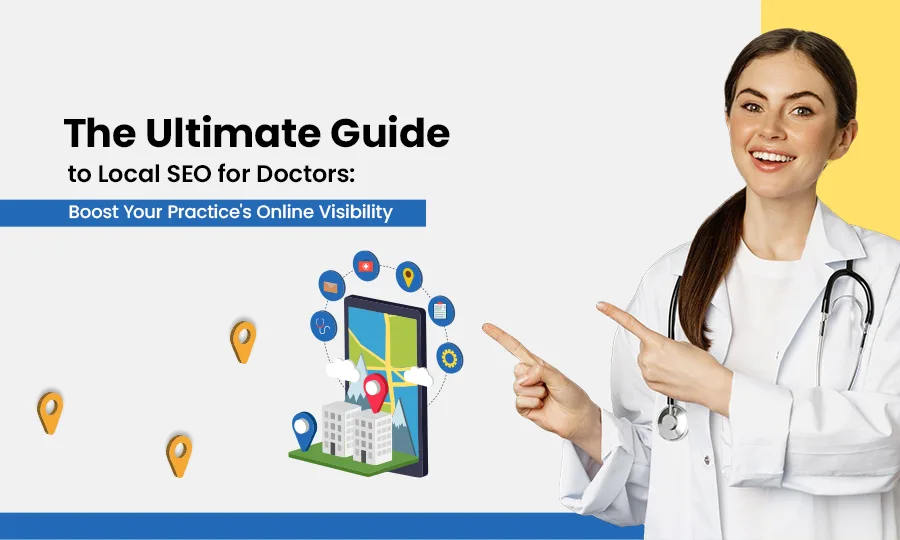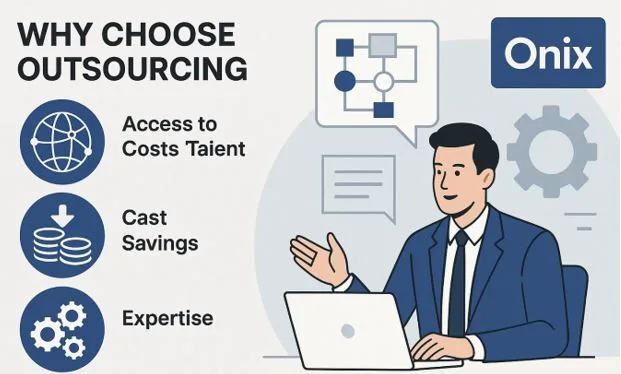From Clicks to Consultations: Turn SEO Traffic into Real Patients
When someone types “Why is my knee painful?” or “cardiologist near me” into Google, medical SEO acts as the behind-the-scenes matchmaker between their concern and your clinic — but it shouldn’t stop at clicks. The real magic happens when those clicks turn into booked consultations, trusted relationships, and loyal patients. In this article, I’ll walk you through how medical practices can bridge the gap between gaining visibility and converting that visibility into real-world patient appointments — all while grounding your strategy in E-E-A-T, local relevance, and the latest AI-aware SEO tactics.
Why Converting Traffic Matters More Than Ever
Getting traffic is just the first step. In the medical field, where trust, clarity, and patient comfort are non-negotiable, a visitor who leaves without making contact is a missed opportunity — perhaps forever. By designing your content, site structure, and patient journey around conversion (not just eyeballs), you turn passive interest into meaningful connection.
Plus, emerging trends in how AI and search engines present answers means many users may never scroll deep — making your “snippet” or top-of-page content your primary handshake. If that content fails to reassure and guide them toward action, you lose before the user ever clicks.
The Pillars That Turn Clicks Into Consultations
1. Build Trust from the First Line (E-E-A-T in Action)
From the moment a user lands, your site should feel credible and safe. That means:
- Experience: Weave in brief, anonymized patient stories (with permissions or fictionalized) that show real-world outcomes.
- Expertise: Display medical credentials, affiliations, and credentials clearly.
- Authoritativeness: Include links, references, and citations from recognized authorities or journals.
- Trustworthiness: Show revision or review dates, disclaimers, and transparency about your content creation and review process.
Visitors, and AI systems alike, are more likely to stay, engage, and act when they sense authority.
2. Lead With Answers — Then Expand
Search and AI systems favor content that answers questions immediately. Start each article or section with a concise, clear answer to the likely question (“What causes sharp knee pain when bending?”). Then expand into subtleties, treatment options, red flags, and when to see a doctor.
This structure helps AI and featured snippet algorithms quote you, while still giving humans deeper value.
3. Use Conversational, Patient-Friendly Language
You don’t write for doctors — you write for people seeking clarity. Avoid medical jargon whenever possible. Use analogies, break down complicated ideas, and guide the user gently toward the “Next Steps” (contacts, consults, forms). This tone keeps people from bouncing.
4. Map a Seamless Conversion Path
Don’t make users hunt for your phone number, booking link, or address. Place clear calls to action at logical points:
- After symptom discussion: “If you’re experiencing these signs, schedule a consult.”
- After explaining the next steps: “Call us today or request an appointment online.”
- On sidebars/footers: “Find us in [City]; open hours; direct contact link.”
Minimize steps and distractions between landing and booking.
5. Use Structured Data to Aid Discovery & Action
Implement schema markup — FAQPage, MedicalCondition, HowTo, LocalBusiness — to help search engines and AI pick up your content as trustworthy and actionable. Use markup to flag your booking forms, contact info, and key services.
6. Local & GEO Strategies Amplify Reach
Many patients search with geographic intent. Strengthen local SEO through Google Business Profile optimization, local service pages, consistent NAP (Name, Address, Phone), and local citations.
At the same time, adopt Generative Engine Optimization (GEO) (or Answer Engine Optimization) techniques to make your content more likely to be selected in AI-generated answers. GEO is not replacing SEO — it’s evolving it.
When your content is both local and GEO-friendly, you increase chances of being seen and trusted in both map packs and AI overviews.
Technical & UX Aspects That Influence Conversions
Site Speed, Mobile Priority & Accessibility
A slow site or broken navigation kills conversions. Optimize images, use responsive design, minimize scripts. Ensure accessibility (alt text, readable fonts, keyboard navigation). First impressions matter — especially in healthcare.
Clear, Logical Content Structure
Use headings (H2, H3) that signal key patient questions and steps. Break long text blocks. Use lists or numbered steps when describing actions (e.g. “What to do next if you have chest pain”). That helps scanning, comprehension, and user retention.
Visuals, Video & Rich Media
Patients resonate with visuals. Short explainer videos, diagrams, or slidewalks of conditions or procedures can reinforce trust and keep users engaged. Video helps reduce bounce rates and often earns a spot in rich snippets or AI responses.
Monitor & Optimize Based on Behavior
Use analytics to see where users drop off: which pages, which scroll depths, which CTAs. Test alternative CTAs, forms, or layouts. A/B testing helps you refine your path from click to consult.
Challenges & Considerations for Medical Practices
Compliance, Privacy & Disclaimers
Medical advice carries risk. Always include disclaimers (“This information is educational; consult a physician for personal diagnosis.”). Ensure forms, chatbots, and tracking tools comply with HIPAA or local privacy laws.
AI Hallucinations & Content Accuracy
If you’re using AI tools to generate drafts or ideas, vet everything against clinical guidelines. Misinformation can erode trust and cause harm.
Patience & Reinforcement
SEO and conversions evolve gradually. Early traffic might not yield many consults — but consistent quality, authority-building, and conversion optimization compound over months.
Managing User Expectations
Not every click should convert to a consult immediately. Some visits are educational; use content paths to nurture. Offer free resources, email signups, or repurposed content to re-engage visitors later.
Conclusion: Let Authority Lighthouse Guide Your Growth
Turning clicks into consultations is not magic — it’s strategy, empathy, and trust woven together. As medical SEO evolves, practices must move beyond visibility to become reliable guides in patients’ search journeys.
When you anchor your site in E-E-A-T, design user-centric conversion paths, embrace GEO-aware local strategies, and monitor behavior to refine your approach, you don’t just get visitors — you build relationships.
If you need help turning your SEO traffic into real appointments — or building that trust bridge — Authority Lighthouse knows how to translate digital authority into patient outcomes. Your clinic can shine not just in rankings, but in relevance, trust, and growth.
FAQ Section
How soon can SEO traffic turn into patients?
Early wins might come in weeks (for local queries), but a steady stream typically develops over several months of content, trust-building, and optimization.
Do I need GEO if I already do SEO?
Yes. GEO complements traditional SEO by optimizing for AI-driven answers and ensuring your content is cited, not just clicked.
What is a good conversion rate for medical websites?
Conversion rates vary — 2–5% of qualified visitors is a solid starting benchmark if your site is optimized and your services aligned with search intent.
How often should I test conversion elements?
Every 3–6 months is reasonable. Test CTA text, button color, form placement, and content flow to identify what nudges users better.
Can smaller practices compete with large hospitals in SEO-to-consult conversions?
Definitely. With niche content, local focus, strong conversion UX, and authority-building, small clinics can outperform larger systems within their geographic markets.






